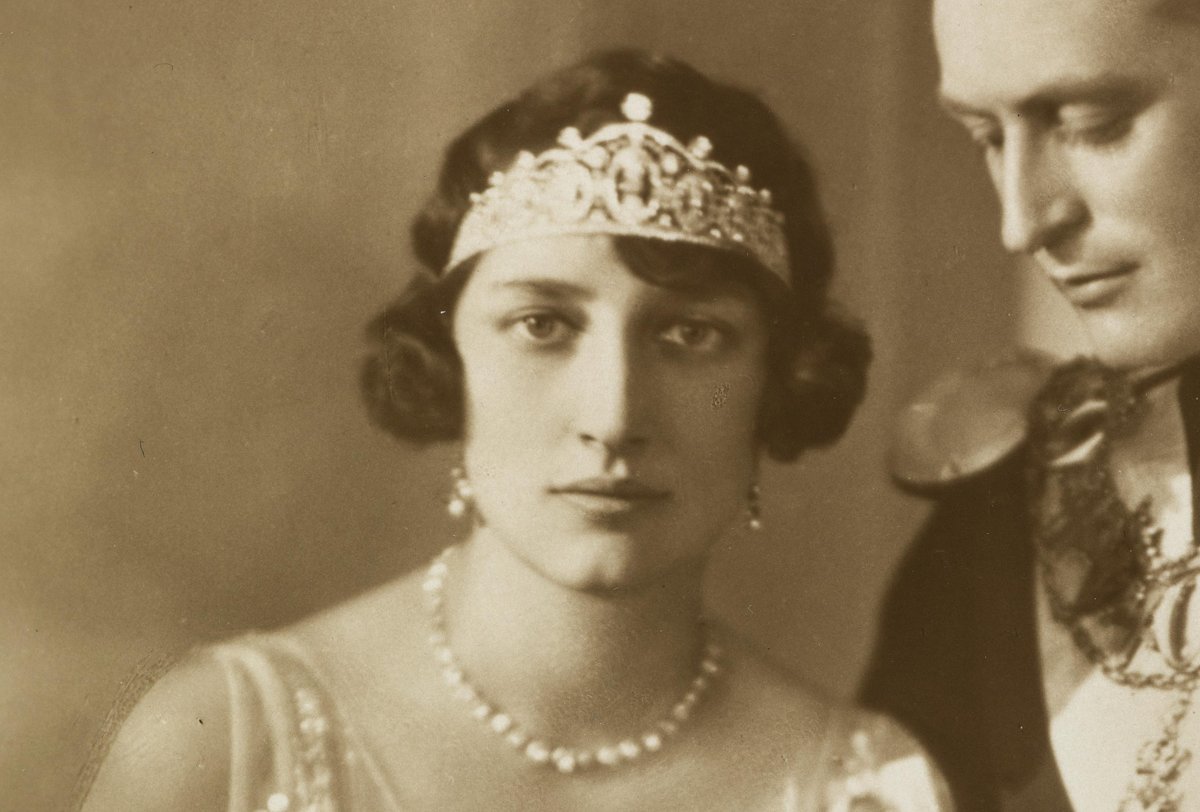
Almost a century ago this week, the people of Norway and Sweden were celebrating a royal wedding between a future Norwegian king and his Swedish princess bride. This is yet another Wedding Tiara Wednesday article without a bridal tiara—well, sort of, anyway. Crown Princess Märtha received and wore a special tiara during her wedding celebrations, one still being worn for gala events in Oslo today.
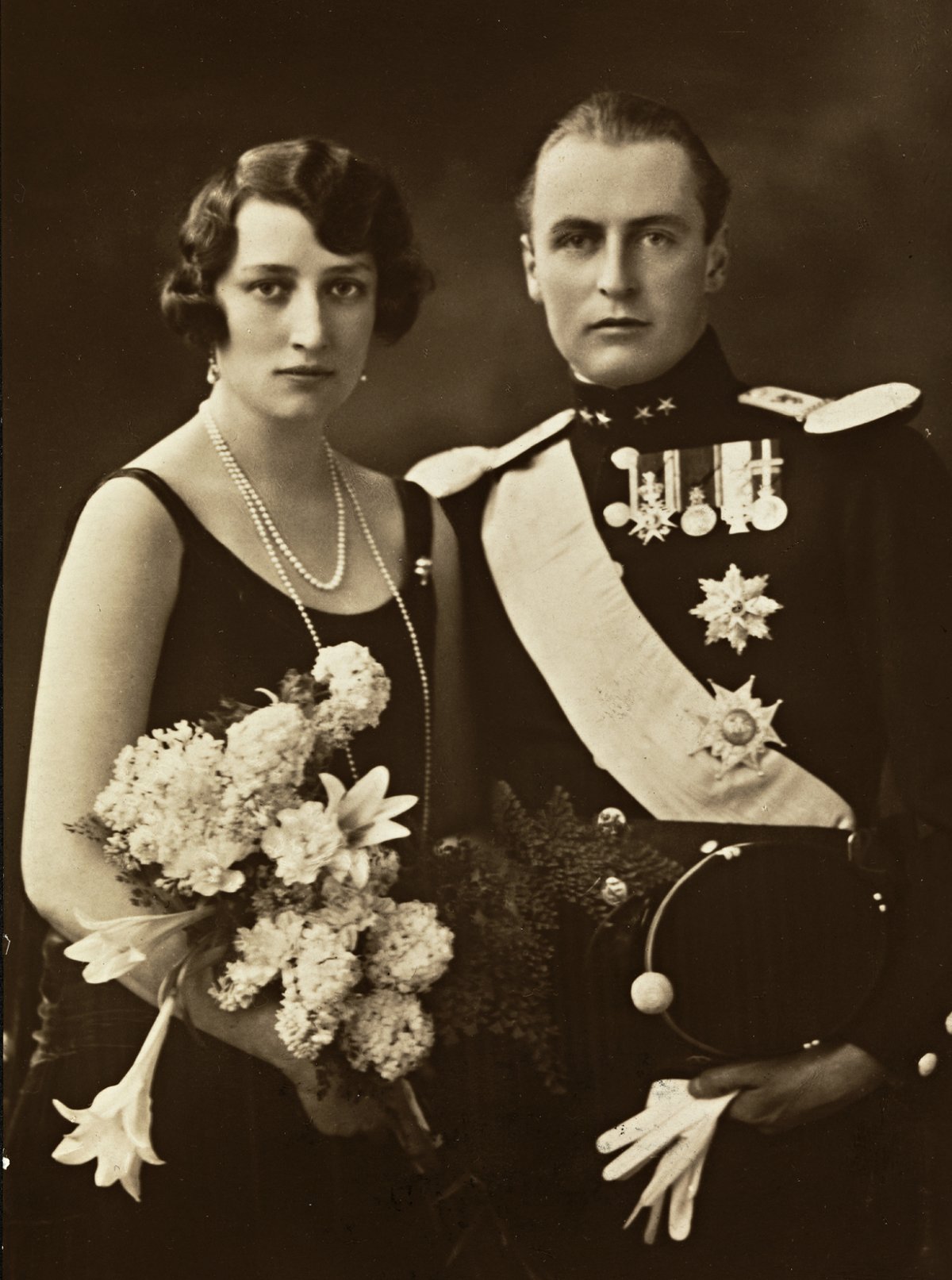
Crown Prince Olav of Norway and Princess Märtha of Sweden officially announced their engagement in January 1929. The groom was the son of King Haakon VI of Norway, and the bride was the niece of King Gustaf V of Sweden, and their royal union represented a reconciliation of the Swedish and Norwegian royal families following Norway’s independence from Sweden in 1905. The couple were also first cousins: his father, King Haakon, was the brother of her mother, Princess Ingeborg.
But although it seems like the marriage must surely have been an arranged one, by all accounts, the couple had genuinely developed romantic feelings for each other. They were engaged privately for several months before announcing their upcoming wedding, which was scheduled for March 21, 1929.
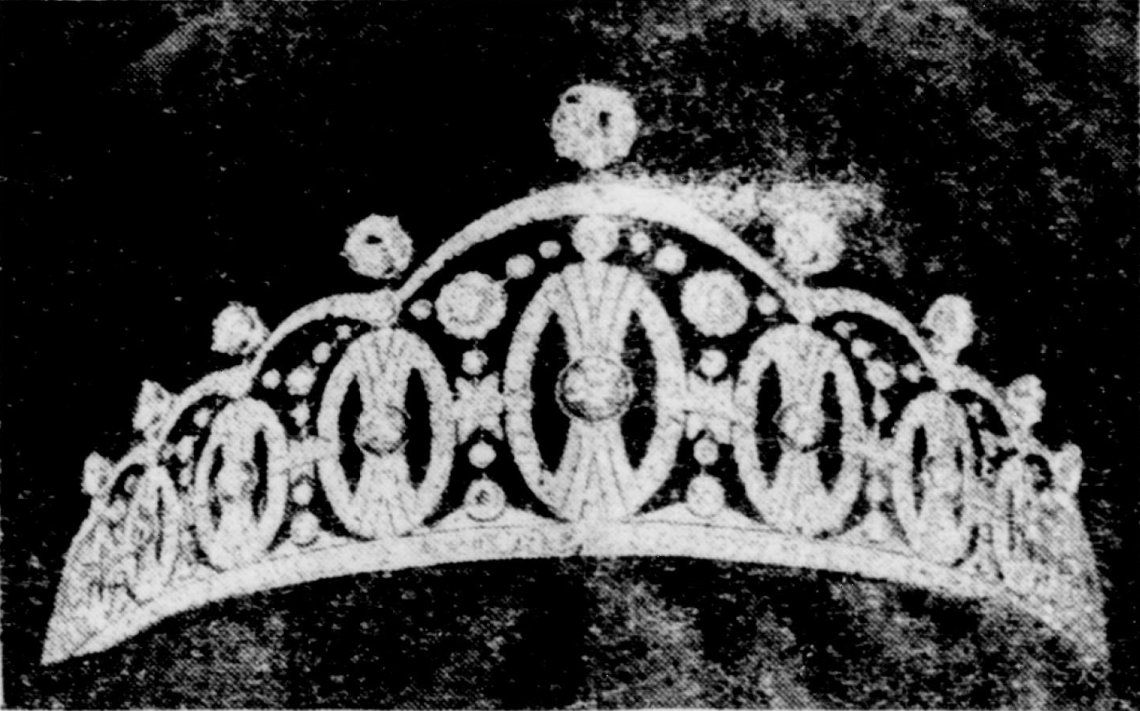
As a going-away present for the popular princess, the people of Stockholm raised money by subscription to purchase a tiara. The platinum jewel, which reportedly cost £3500 at the time, was set with 956 diamonds. It was made by C.F. Carlman of Stockholm and placed on public display in their shop window before it was given to the princess.
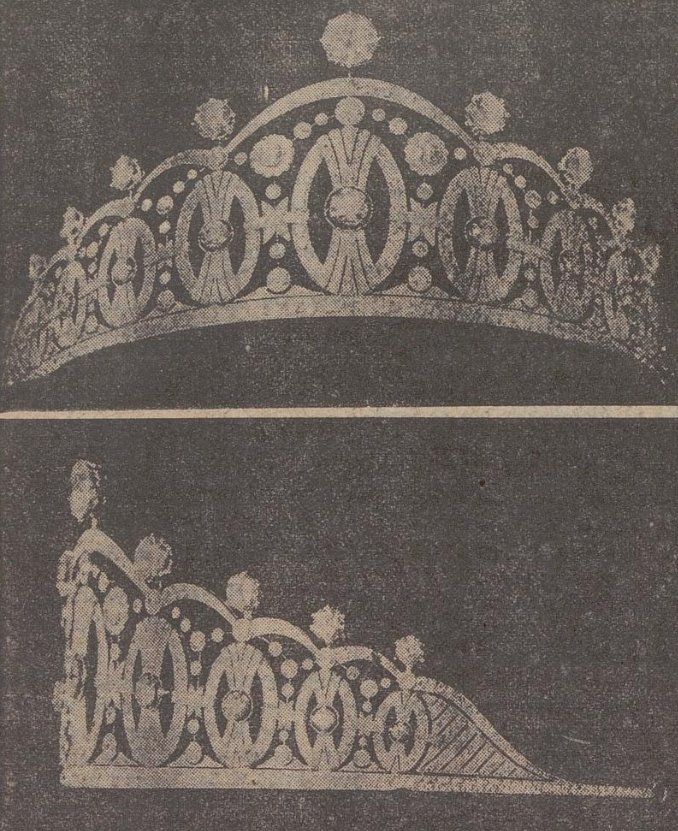
Newspapers in Norway also published detailed images and illustrations of the wedding gift tiara. The piece was called the “Vasadiademet,” or the Vasa Tiara, because of some of the symbolism used in its design. In a reference to Sweden’s royal past, the jeweler incorporated a sheaf of corn or wheat into the jewel. That’s one of the heraldic symbols of the House of Vasa, the dynasty that ruled Sweden from 1523 to 1654. Princess Märtha was descended from the House of Vasa through her great-great-grandmother, Princess Joséphine of Leuchtenberg.
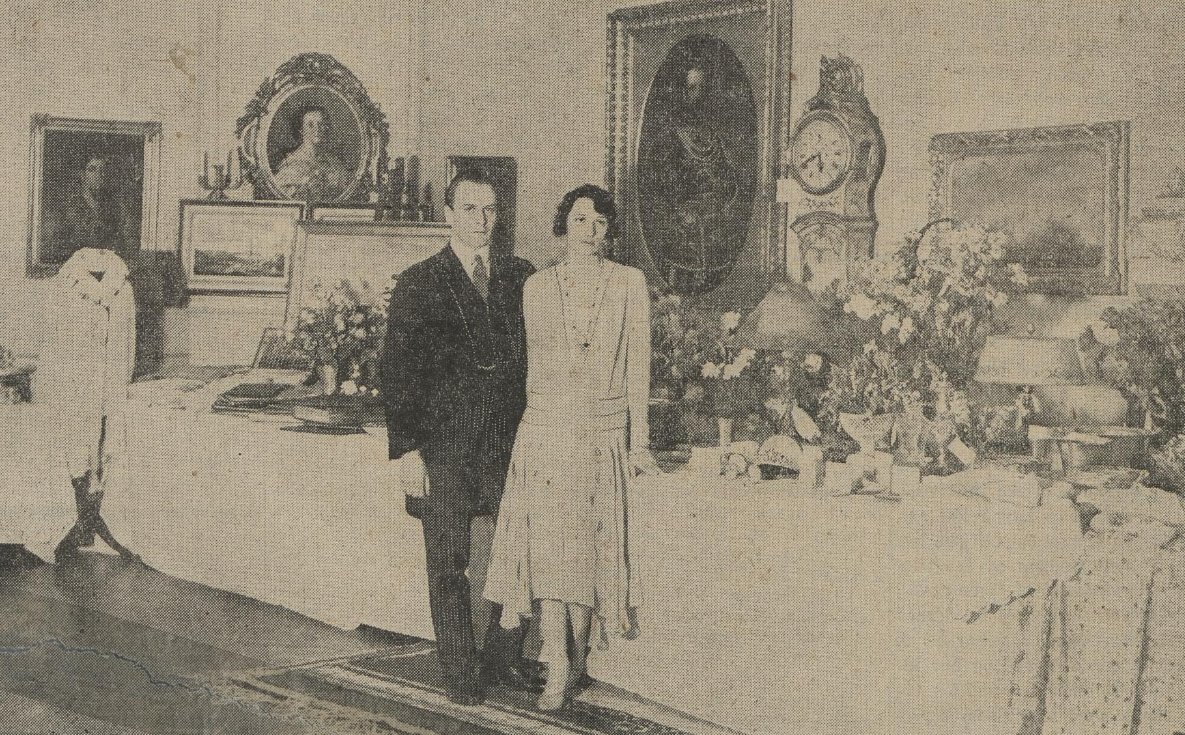
A week before the couple’s royal wedding, Crown Prince Olav trekked to Stockholm to join in a series of pre-wedding festivities there. The weekend before the couple was scheduled to travel to Oslo, a grand reception was given in their honor at Stockholm’s city hall. There, the Governor of Stockholm, Mr. Elmquist, officially presented the Vasa Tiara to Princess Märtha, along with the good wishes of the city’s residents. Before their train journey to Norway, Olav and Märtha posed for a photograph with the official display of the wedding presents.
This photograph from that session shows the Vasa Tiara, in its fitted case, resting on the table beside the couple. Soon, the couple headed to the railway station to travel to Norway. In a gesture of gallantry (and a bit of drama), Olav took a faster train, so that he could be in Oslo before Märtha and officially greet her as she arrived in her new homeland.
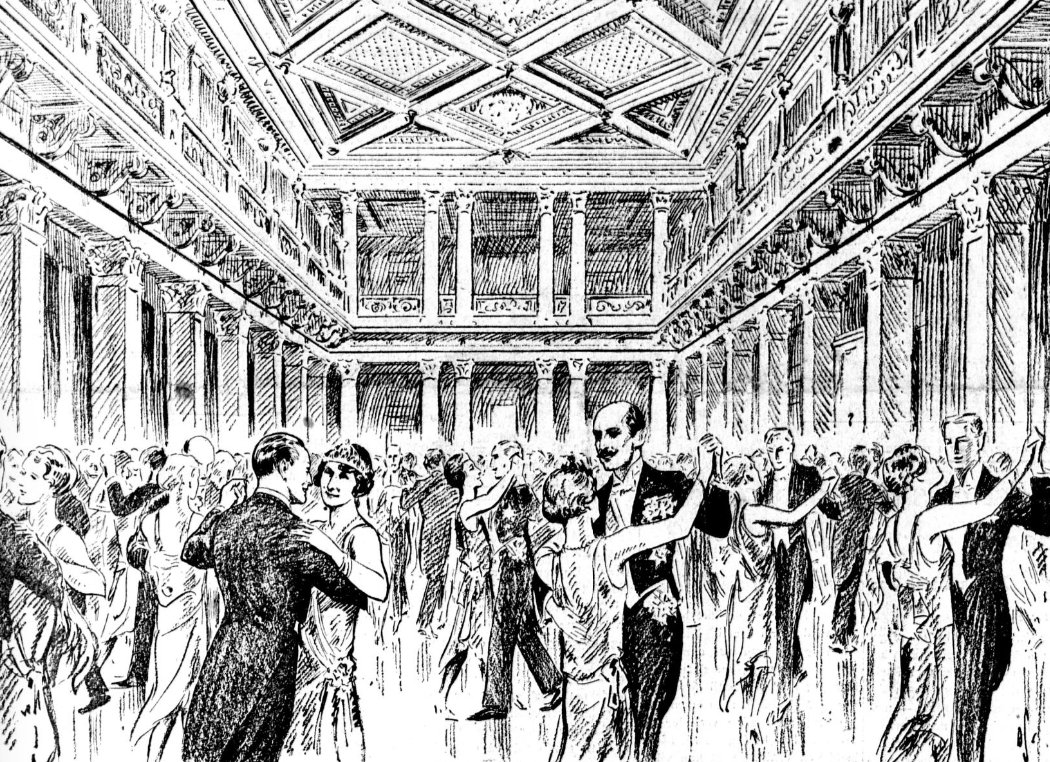
When Olav and Märtha had arrived in Oslo, the wedding celebrations were in full swing. A state ball was held at the Royal Palace in Oslo on March 19. A special correspondent for the Daily Telegraph described Princess Märtha’s gown as “a gold lace frock with a basque effect,” worn with “a double string of beautiful pearls.” Though the correspondent didn’t describe a tiara as part of her ensemble, the artist who illustrated the scene for several Norwegian newspapers showed the dancing princess wearing her new Vasa Tiara for the occasion.
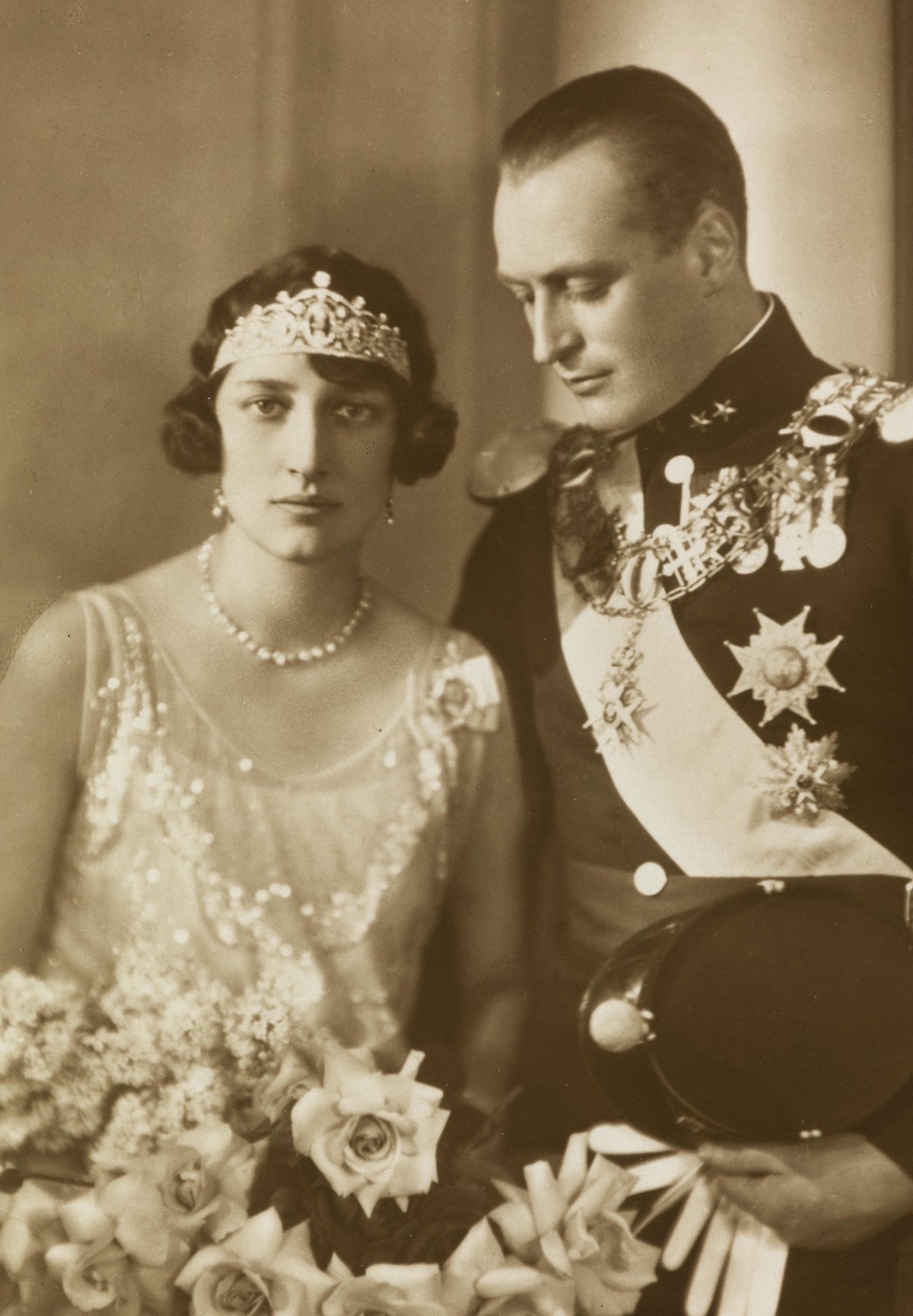
Our first photographs of Princess Märtha wearing the wedding gift tiara come from the following evening. On March 20, the night before the royal wedding, a gala performance was held in the couple’s honor at Norway’s National Theatre. Those in attendance wore full gala dress: uniforms and medals for the men, gowns and tiaras for the women. Märtha wore the new tiara low across her forehead, in the fashion that was particularly popular in the 1920s.
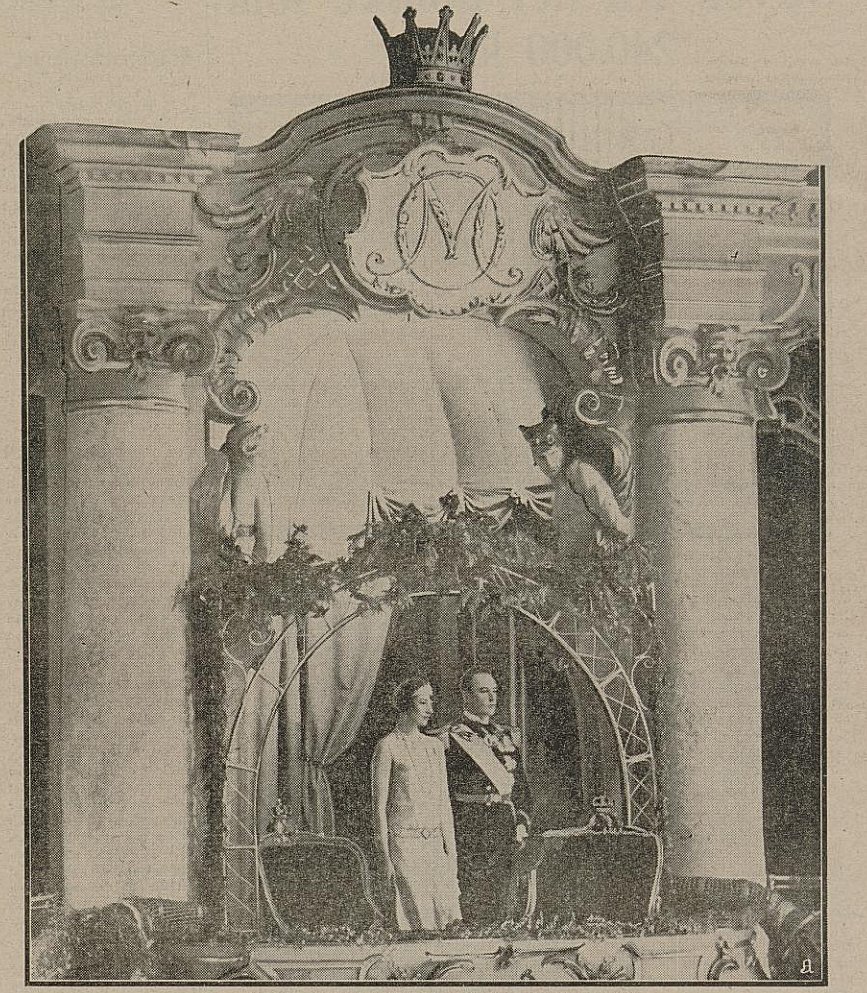
Illustrated photographs of the couple sitting in the royal box at the theater also show Märtha wearing the tiara. They were seated alone in the box for the performances, with other royals in an improvised box in another part of the theater. There were several other familiar tiaras worn. Queen Maud, the groom’s mother, wore Queen Alexandra’s Turquoise Circlet. The Duchess of York (whose husband, Olav’s cousin, was serving as best man) wore the Persian Turquoise Tiara, also placing it low on her forehead. Princess Ingeborg, the bride’s mother, wore her grand emerald tiara. And Crown Princess Louise of Sweden sparkled in Queen Sofia’s Tiara.
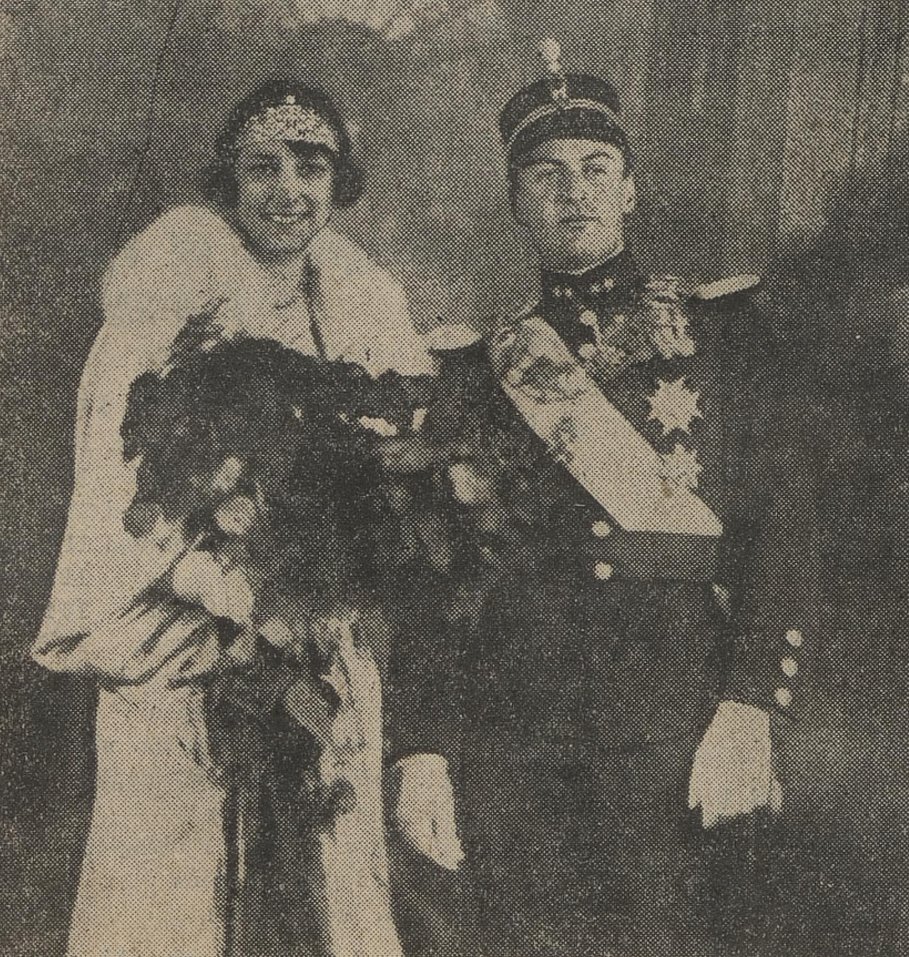
Here’s another look at Olav and Märtha in their finest gala attire on the eve of their royal wedding.
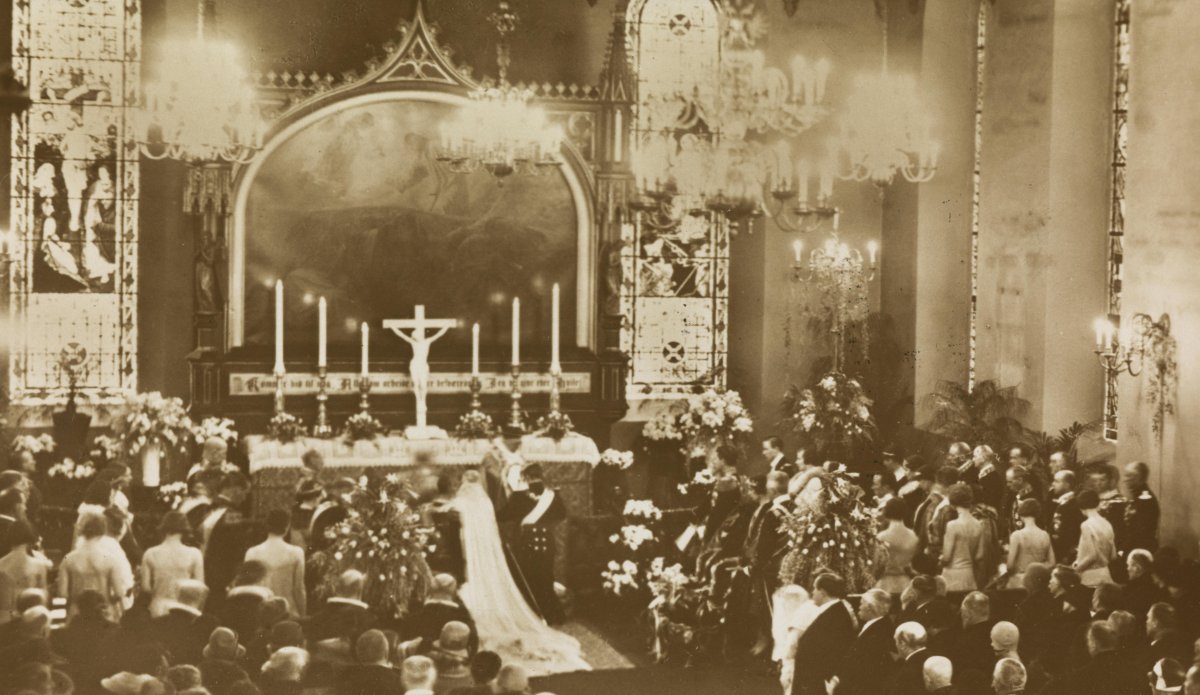
The royal wedding took place on March 21, 1929, in Oslo’s cathedral. The ceremony was able to be enjoyed abroad as well, as the BBC broadcast the wedding on the radio. After all, Olav was a well-known figure in Britain. His mother, Queen Maud, was born a British princess, and King George V and Queen Mary were his uncle and aunt.
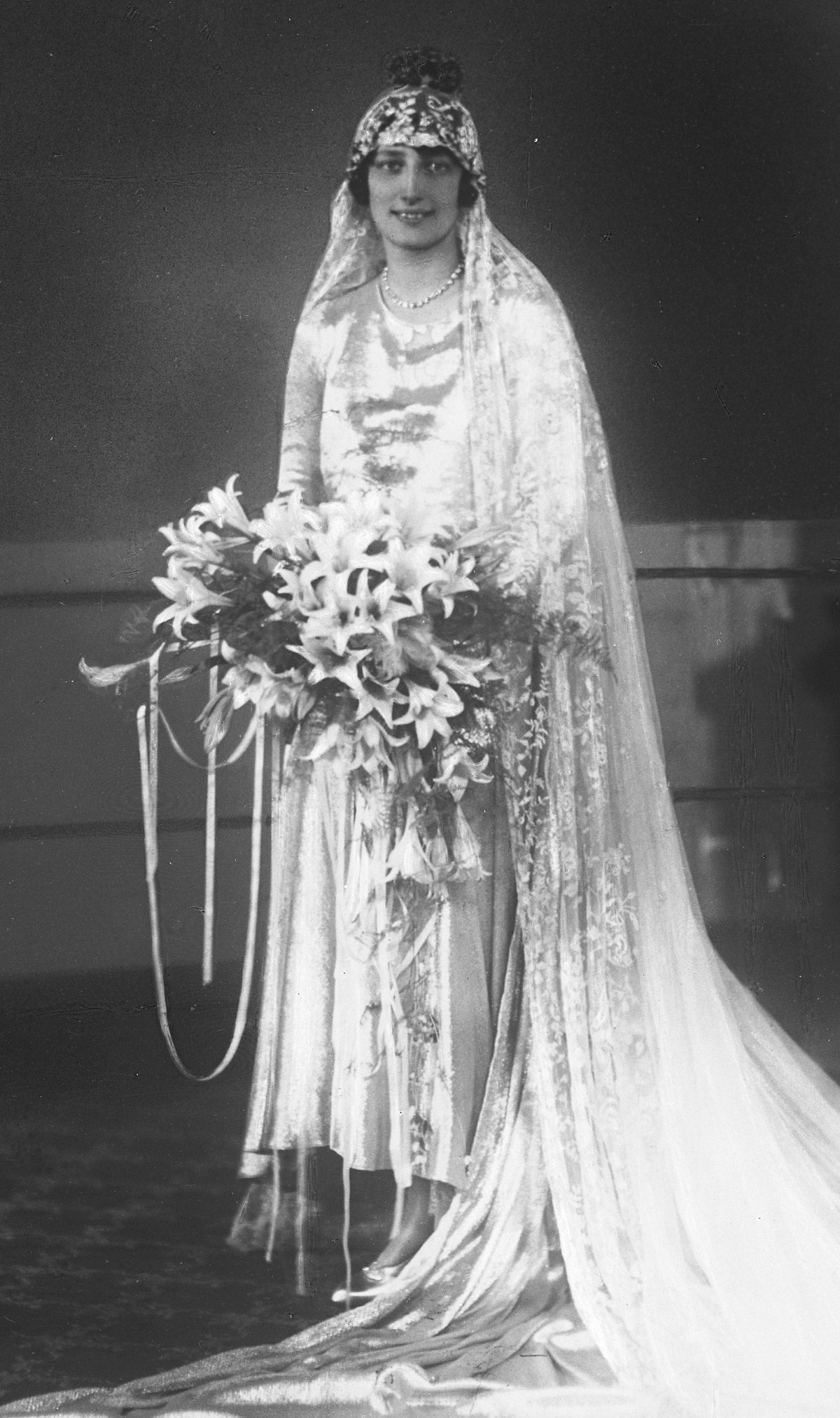
For the royal wedding itself, Märtha—now the Crown Princess of Norway—went without a tiara. She wore a gown made of silver lamé and Brussels lace, with a dramatic 12-foot train. Atop her lace veil, she wore orange blossoms and a bridal crown made of myrtle. A diamond necklace completed the wedding look.
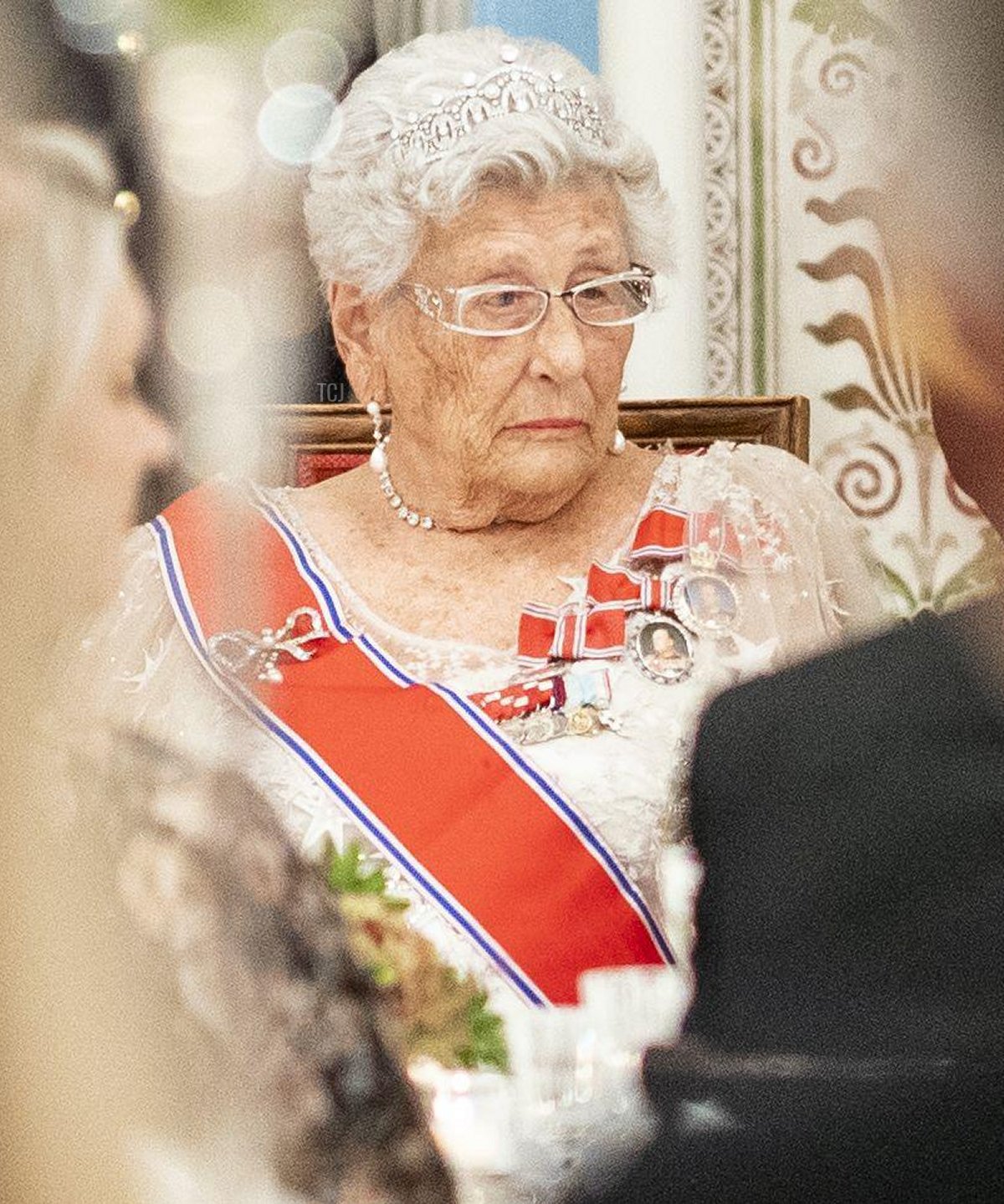
As for the Vasa Tiara, it’s still in royal hands today. It was inherited by Märtha’s younger daughter, Princess Astrid, who still wears it at gala functions in Oslo supporting her brother, King Harald V of Norway. Astrid has a keen understanding of the historical importance of royal jewelry, and she has indicated that she intends for the Vasa Tiara to remain in royal hands going forward.
Leave a Reply
You must be logged in to post a comment.